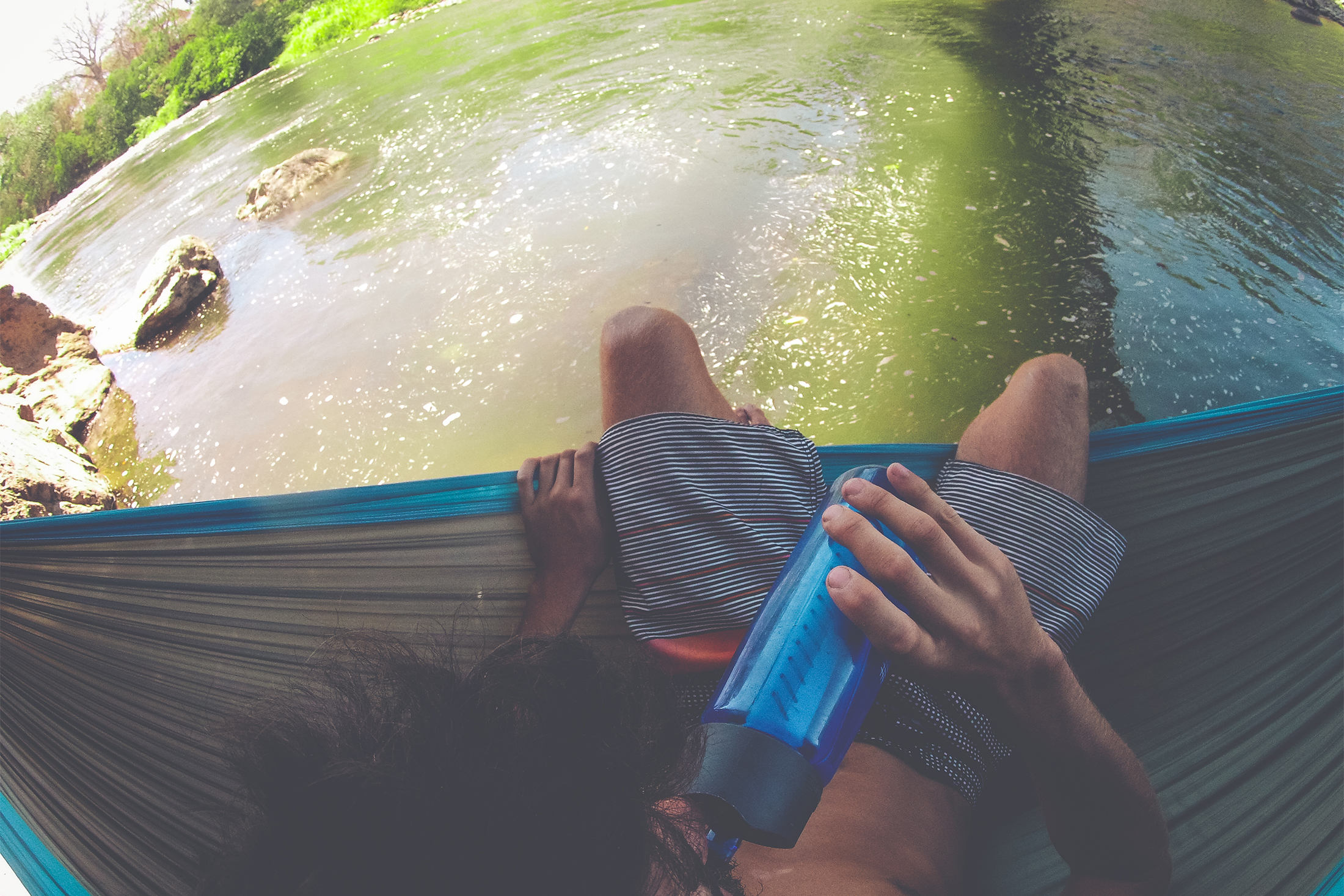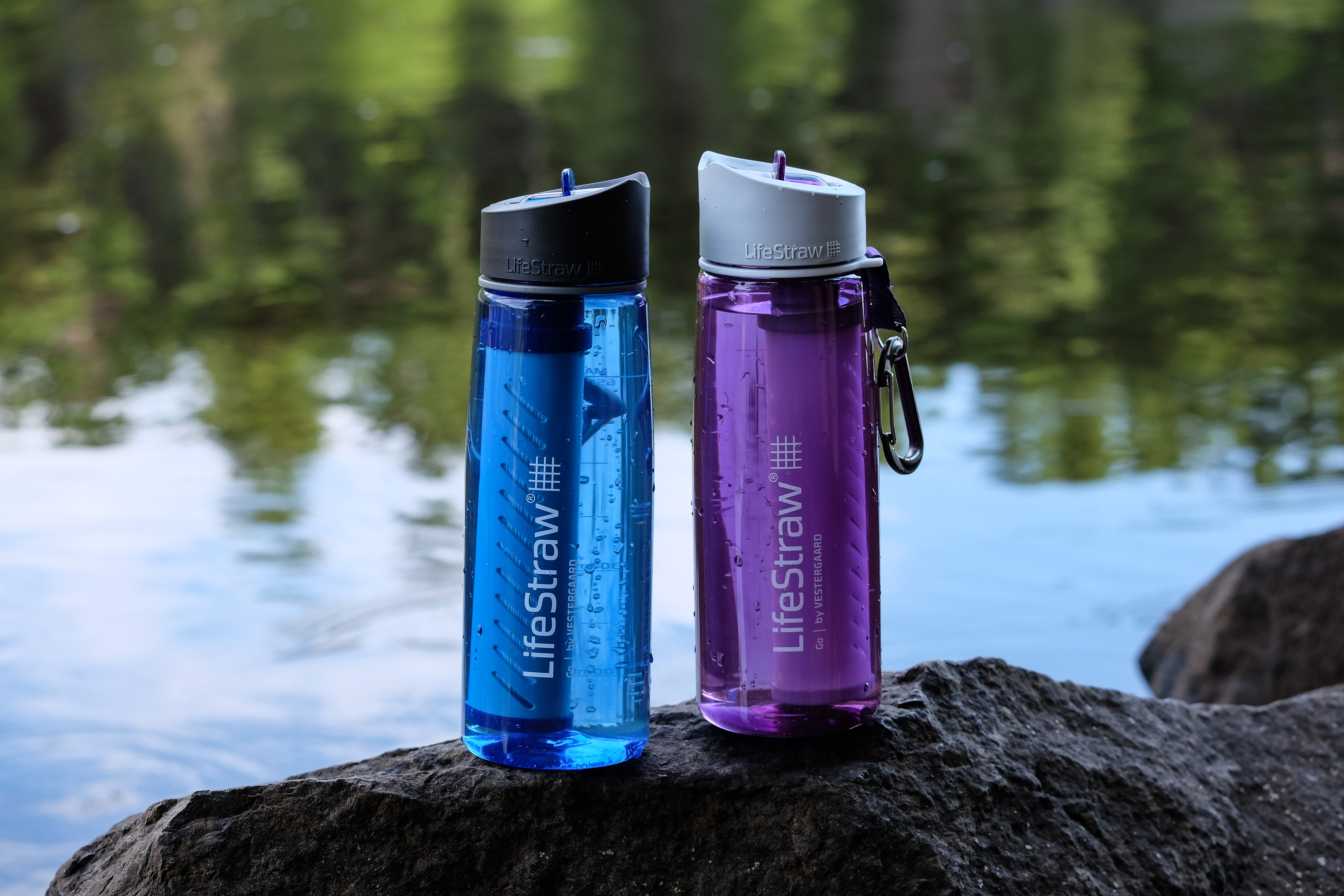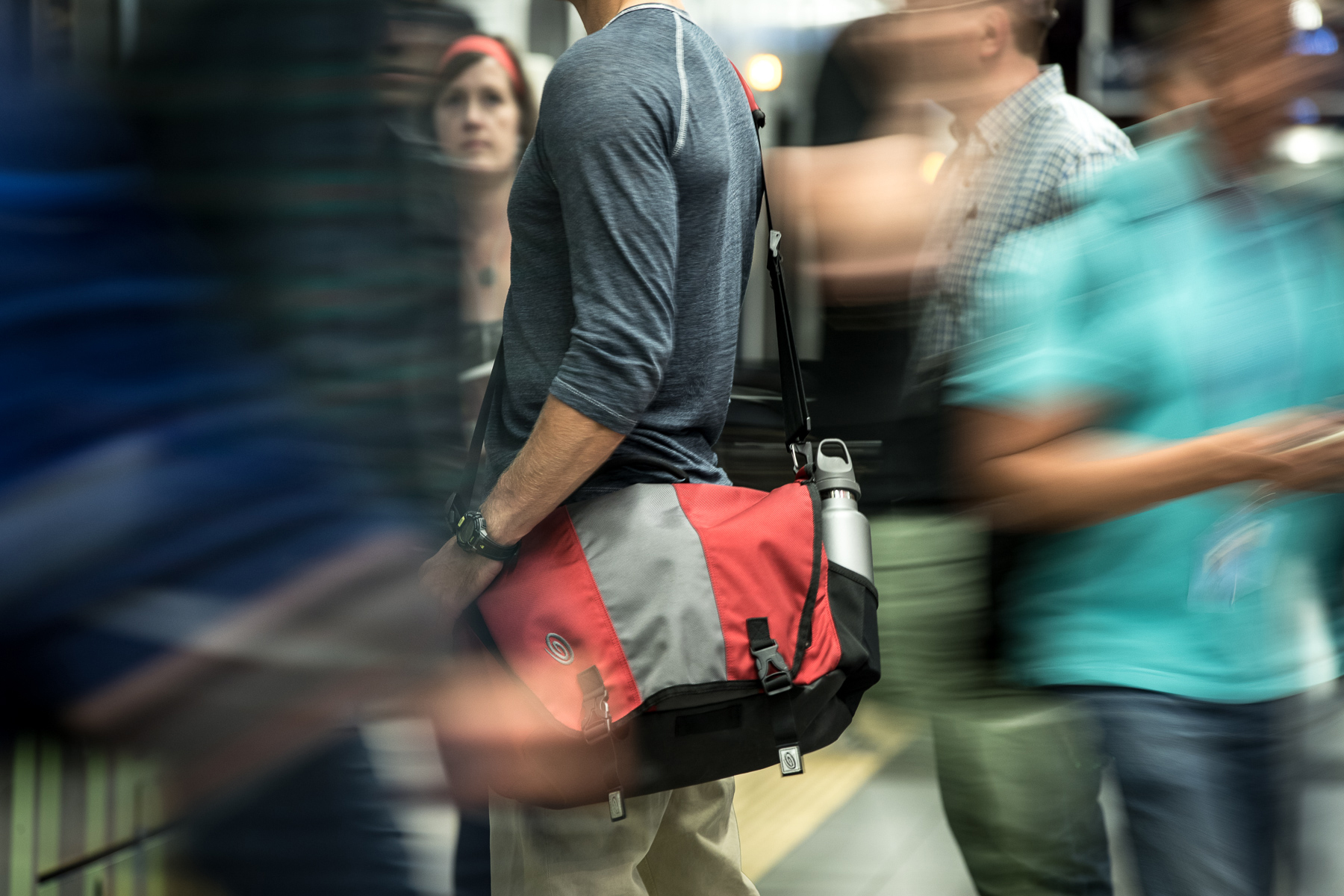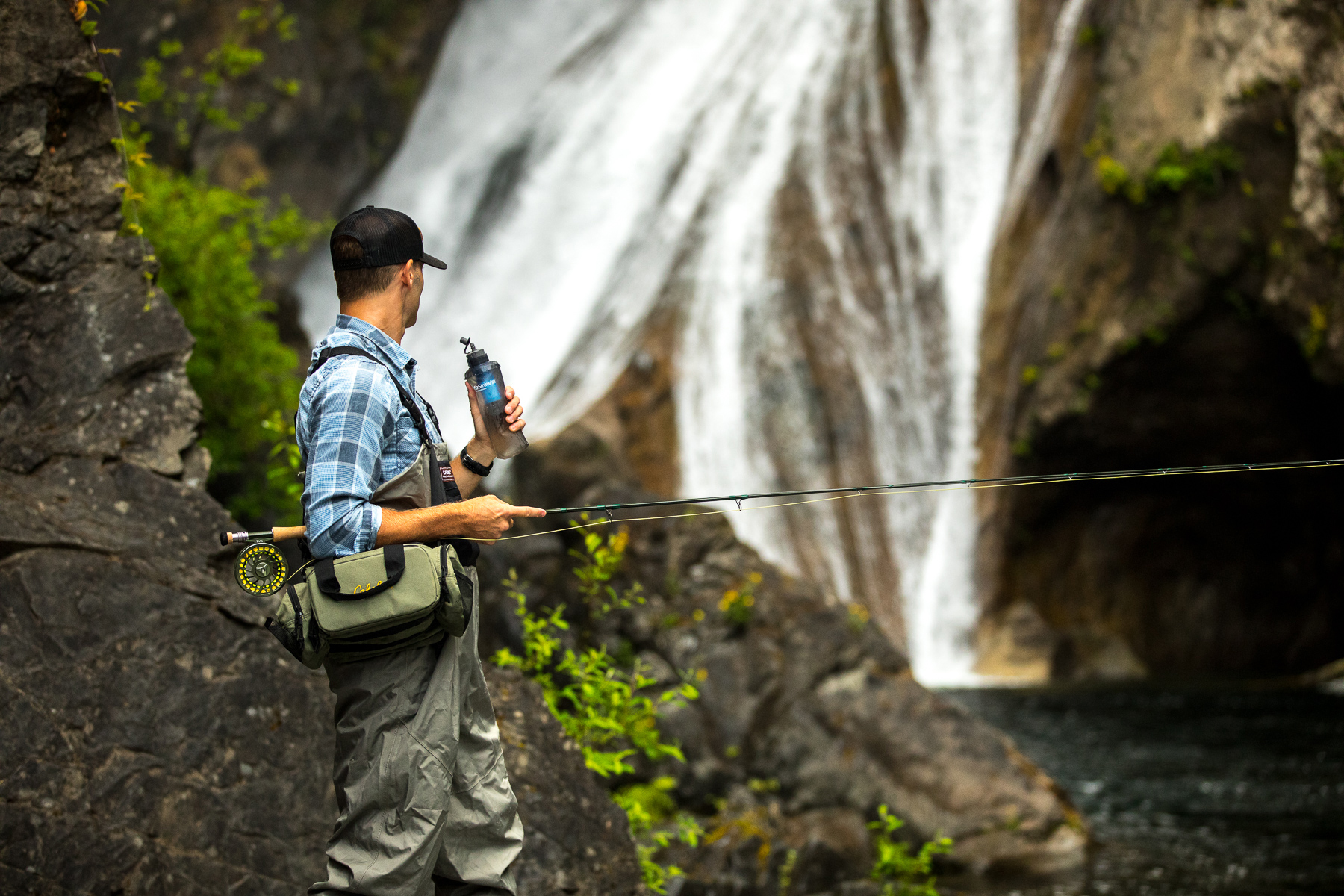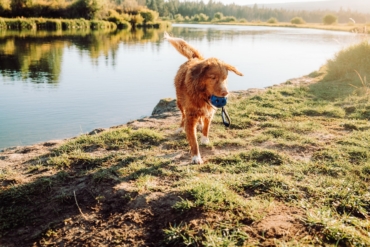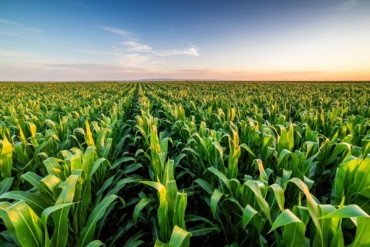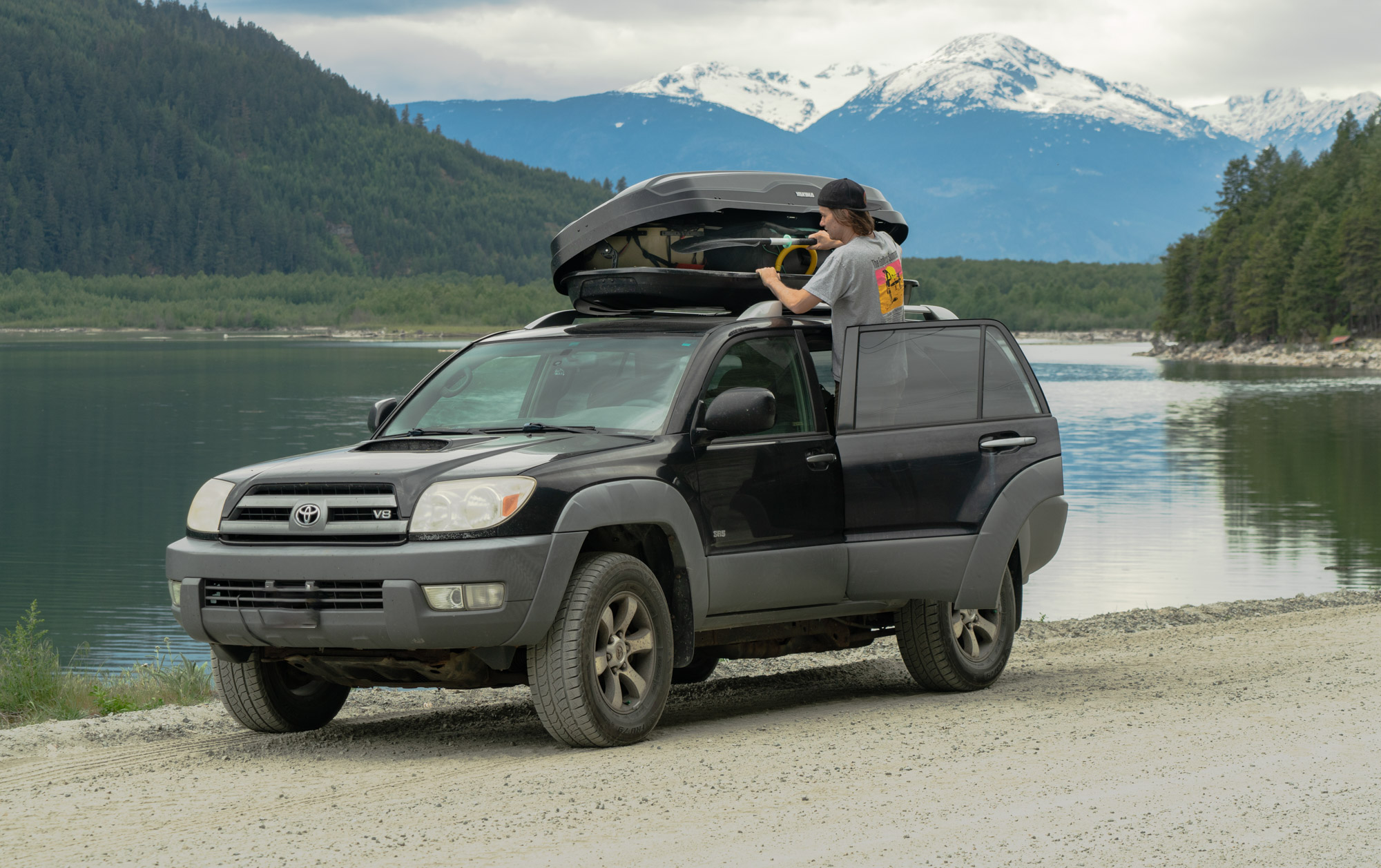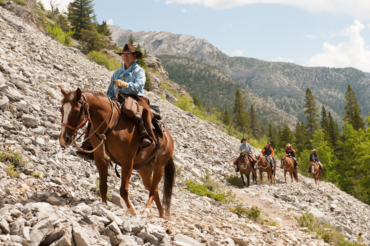LifeStraw water filters and purifiers have made traveling off the grid safer and simpler.
But that’s just one choice humans can make to move around more consciously. Here are more ways you can reduce your impact, not to mention contribute to a healthier, more sustainable planet.
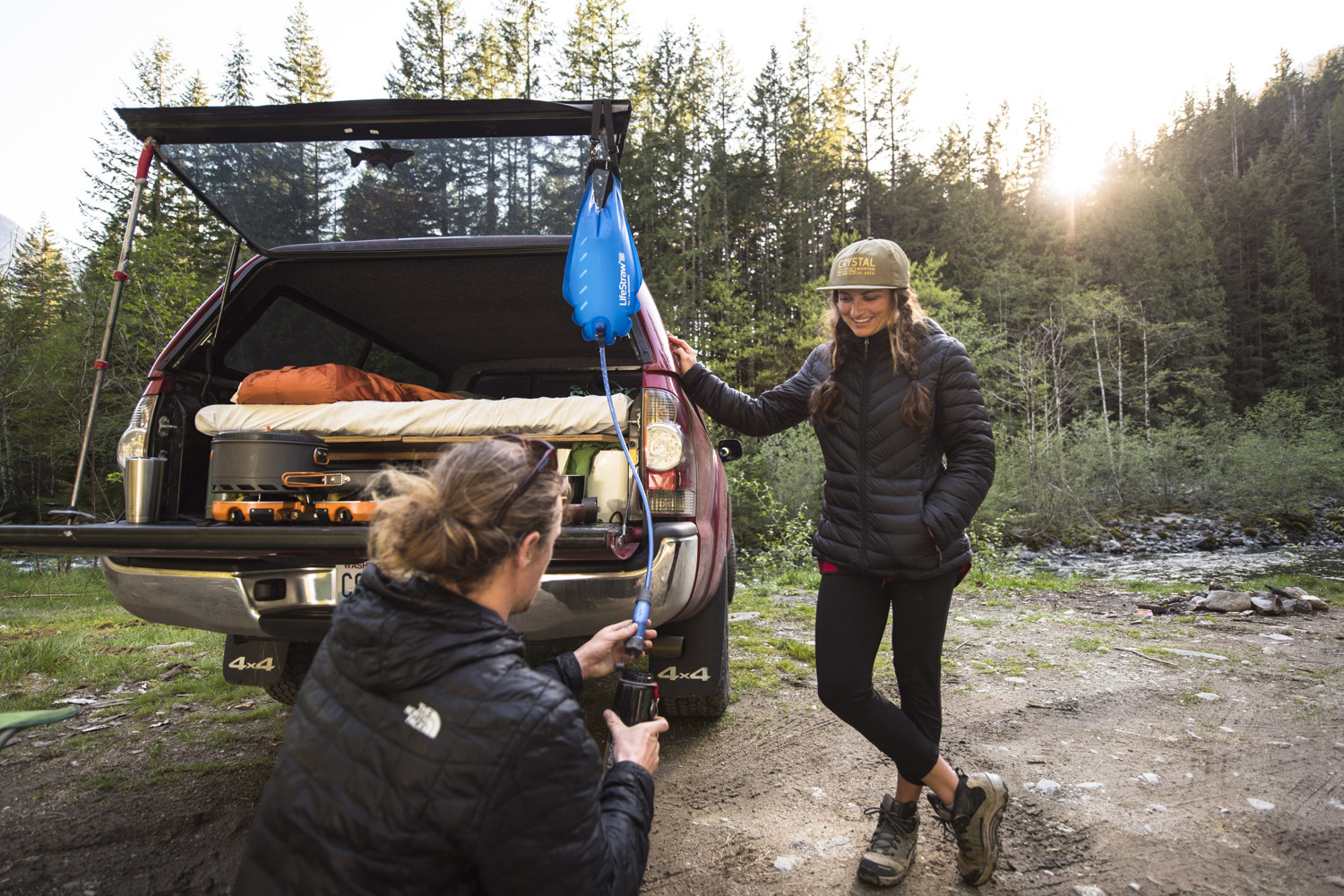
Conscious Travel Tips
1. Go with one bottle.
Lighten your load with a single water-filtering bottle for all your travels. Stay safe from waterborne bacteria and parasites and avoid buying bottled water in places where you can’t trust the tap. Better yet, fill up straight from a river or stream. The LifeStraw Go bottle comes with a detachable filter.
Whether you take it to work or across the world, the brand says it’s good to go for 5 years of healthier and better-tasting water. Plus, with every purchase, one child gets a year of clean water courtesy of LifeStraw. There’s something to feel good about from every angle.
2. Fly with an eco-friendly airline.
Each year, both major and minor airlines make more attempts to green up air travel. For more conscious travel, consider booking flights with forward-thinking companies like Alaska Airlines and Delta, which usually top the list of the most eco-conscious flyers.
Alaska Airlines is transparent about both CO2 emissions and ongoing efforts to cut fuel consumption. The airline also has gone strawless and composts its coffee grounds.
Likewise, Delta reports openly on fuel consumption as well as water and hazardous waste. It also runs a recycling program and invests heavily in carbon offsets. This year, Delta said it would buy 50,000 carbon offsets, enough to cancel out the emissions generated by transporting more than 300,000 people by air.
3. Multipurpose your packing.
If it only has one use, ditch it. Better yet, sell your single-use stuff and put the earnings toward a rugged travel bag that will serve more functions and last longer.
Today’s innovative convertible luggage and backpacks come with convertible strap setups for carrying your gear efficiently in both urban and remote settings, as well as transporting it on planes, trains, buses, and all the other public transportation you take during your conscious travel escapades.

And with tons of internal and external pockets, modern multipurpose packs can eliminate the need for unnecessary extras like purses, phone cases, camera bags, laundry bags, and more. Not only will you travel lighter and swifter, but you’ll likely carry less stress just by having less to look after.
4. Take your table.
As the world is catching on to the coolness of reducing single-use plastics like bags, cups, and straws, it’s no longer so dorky to BYOU (bring your own utensils).
There are loads of cleverly designed, minimalist fork and spoon sets; stainless steel straws for coffee and smoothies; reusable, dishwasher-safe, ziplock snack bags; and collapsible, space-saving containers for restaurant leftovers.
5. Stash your ‘go clothes.’
In many ways, big brands have made this task a breeze by developing techy travel clothes that wick sweat, defy wrinkling, eat body odor, and pack small. Take this a step further and get out the door more efficiently by setting aside a trekking wardrobe that doesn’t mix with your daily wear.

Depending on the season, your trek set should include comfy layers in neutral colors. Note: Every top should work with every bottom. Keep the kit together, even inside your luggage, all year long. Add outerwear appropriate for your destination and two pairs of your most packable shoes. Voila!
6. Stay local — or in good company.
Where you decide to lodge matters too. While it’s hard to turn down incentives like those hotel points you can rack up through work, think twice about where you choose to overnight.
When possible, stay with a local or in a well-reviewed, explorer-friendly Airbnb. Not only are you reducing your footprint and providing someone else with karmic side income, but you’re also often getting the inside scoop on where to go, what to see, and how to save even more money and resources — like only a local knows.
In a similar vein, look for smaller, independently run, environmentally friendly lodges that market around offsetting every stay. Think about creative ways to cook meals in a community kitchen, buy from local farmers’ markets, and bike your way around a new city or countryside.
7. Collapse your kit.
Downsizing and traveling lighter doesn’t have to mean giving up the full-size comforts of home. A variety of your favorite everyday items now come with increasingly squishable components.
The Flex is LifeStraw’s favorite version of this. It’s a collapsible 22-ounce water-filtering squeeze bottle that packs super light and allows you to filter water for all sorts of on-the-go needs, from drinking to cooking to brushing your teeth.
But that’s just the start of the new foldable universe. There are rain jackets and waist packs that self-contain into tiny pouches, reusable eat and drinkware that folds flat, ultra-low-profile headlamps, microlight puffies that fit in your palm, and bottle-less personal hygiene products that biodegrade or disappear the longer you travel. See, we’re just getting started here.
This article is sponsored by LifeStraw. Check out the Go and Flex, or shop the full range of LifeStraw water filters and purifiers here.
